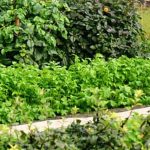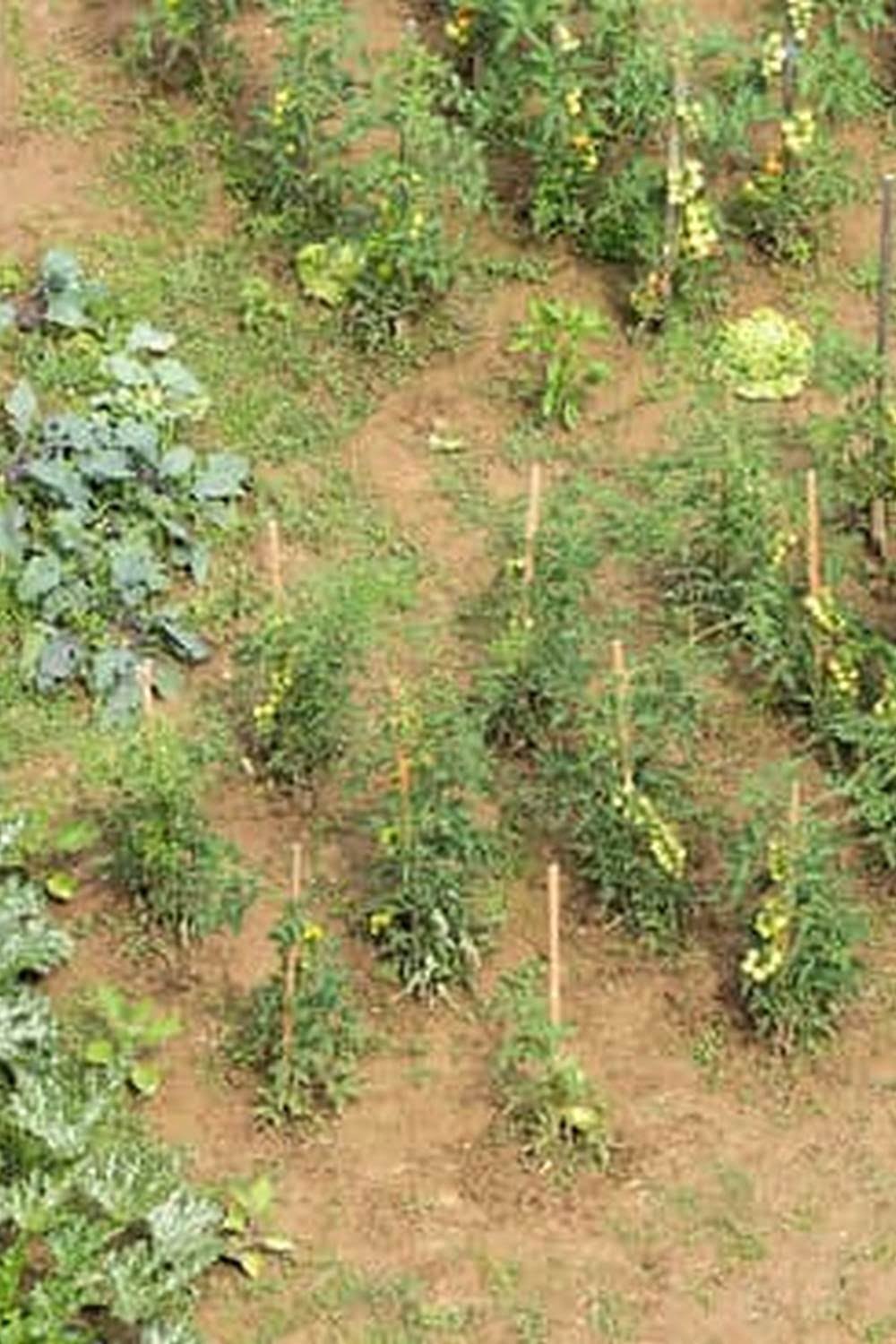Small area vegetable gardening is a growing trend among urban dwellers and those with limited outdoor space, offering a rewarding way to grow fresh produce right at home. In this article, we will delve into the benefits of small area vegetable gardening and why it is an excellent option for anyone looking to cultivate their own fruits and vegetables in a confined setting.
With the increasing popularity of urban living and shrinking outdoor areas, small area vegetable gardening provides a practical solution for individuals who are keen on cultivating their own food but lack the space for a traditional garden. Whether you have a balcony, patio, or even just a sunny windowsill, there are various ways to transform small spaces into productive vegetable gardens that can yield bountiful harvests.
Not only does small area vegetable gardening allow you to enjoy the satisfaction of harvesting your own fresh produce, but it also promotes sustainability, reduces food miles, and encourages healthy eating habits. By utilizing techniques such as container gardening and vertical gardening, you can maximize space efficiency and create a flourishing mini-garden that provides an abundance of homegrown vegetables.
Choosing the Right Location
Maximizing Sunlight
One of the key factors to consider when choosing the right location for your small area vegetable garden is maximizing sunlight exposure. Most vegetables require at least 6-8 hours of direct sunlight daily to thrive.
Look for a spot in your outdoor space that receives ample sunlight throughout the day, preferably facing south or west for optimal sun exposure. If you have limited options, consider using reflective surfaces such as mirrors or white walls to bounce more sunlight onto your plants.
Ensuring Good Drainage
Proper drainage is crucial for the success of any vegetable garden, regardless of its size. Avoid areas where water tends to pool or accumulate, as standing water can lead to root rot and other issues. If your small area vegetable garden is located in a low-lying area, consider building raised beds to improve drainage and prevent waterlogging. You can also amend the soil with organic matter such as compost or perlite to enhance drainage capabilities.
Access to Water Source
Convenience is key when it comes to watering your small area vegetable garden regularly. Choose a location that is easily accessible to a water source, whether it’s a nearby hose, rain barrel, or watering can. Consider installing a drip irrigation system or soaker hoses to efficiently deliver water directly to the roots of your plants while conserving water.
Remember that consistent watering is essential for healthy plant growth, especially during hot summer months when evaporation rates are high. By selecting a location with easy access to water, you can ensure that your small area vegetable garden thrives throughout the growing season.
Container Gardening
When it comes to soil mixtures for container gardening in small areas, it is crucial to use a high-quality potting mix that is well-draining yet water-retentive. A good potting mix provides the necessary nutrients for healthy plant growth without becoming compacted over time.
Consider adding organic matter such as compost or aged manure to further enrich the soil and support the growth of your vegetables. Remember to regularly check the moisture levels of the soil in your containers, as they may dry out faster than traditional garden beds due to their smaller size and exposure to sunlight.
In addition to choosing the right containers and soil mixtures, proper care and maintenance are key factors in successful small area vegetable gardening through container gardening. Regularly monitor your plants for signs of pests or diseases, as small areas can be more susceptible to such issues.
Water your container garden consistently based on the specific needs of each vegetable variety you are growing. With attention to detail and a bit of effort, container gardening can transform any small area into a thriving vegetable garden full of fresh and nutritious produce.
| Container Gardening Tips | Benefits |
|---|---|
| Choose deep containers with drainage holes | Optimal use of limited space |
| Use high-quality potting mix with organic matter | Fresh produce grown at home |
| Monitor moisture levels in soil regularly | Customizable according to personal preferences |
Vertical Gardening
One of the key advantages of vertical gardening is the ability to grow vining vegetables such as cucumbers, peas, and squash that tend to take up a lot of horizontal space. By training these plants to climb trellises or structures, gardeners can effectively use the vertical space available while promoting better air circulation around the plants.
Additionally, using hanging planters or wall-mounted containers allows for cultivating a variety of herbs and smaller vegetables that can thrive in a vertical orientation.
When setting up a vertical garden, it’s essential to consider factors like weight load capacity, sunlight exposure, and access to water for proper irrigation. Choosing sturdy trellises or supports that can withstand the weight of mature plants is crucial to avoid any accidents.
Positioning the vertical structures in sunny areas where plants can receive adequate sunlight is also vital for healthy growth. Moreover, ensuring easy access to water sources for regular watering will help maintain optimal conditions for vegetable production in a small area vegetable garden.
| Benefits of Vertical Gardening | Tips for Vertical Gardening |
|---|---|
| Maximizes growing space | Choose sturdy trellises or structures |
| Promotes air circulation | Select sunny locations for placement |
| Enhances productivity | Ensure easy access to water sources |
Selecting Vegetables
When embarking on small area vegetable gardening, selecting the right vegetables is crucial to ensure a bountiful harvest in limited space. Whether you have a small backyard, balcony, or patio, choosing compact varieties, fast-growing crops, and those suitable for container growing can make all the difference. Here are some recommendations for vegetables that thrive in small spaces:
- Tomatoes: Compact determinate varieties like cherry or patio tomatoes are ideal for small area vegetable gardening. They can be grown in containers or hanging baskets, providing a steady supply of fresh tomatoes throughout the season.
- Herbs: Herbs such as basil, parsley, and chives are perfect for small gardens. They can be grown in pots or window boxes, adding flavor to your meals while taking up minimal space.
- Leafy Greens: Fast-growing crops like lettuce, spinach, and arugula are excellent choices for small area vegetable gardening. They can be harvested continuously for fresh salads and sandwiches.
In addition to these recommendations, consider planting vegetables that are well-suited for container growing. This includes root vegetables like radishes and carrots, as well as peppers, cucumbers, and beans. Be mindful of the space requirements of each plant and plan accordingly to maximize your small area vegetable garden’s productivity.
Moreover, experimenting with companion planting can further optimize your small area vegetable garden by pairing compatible plants that benefit each other’s growth. For example, planting carrots near tomatoes can help deter pests that commonly attack tomato plants. Research different companion planting combinations to create a harmonious environment in your garden.
By carefully selecting compact varieties, fast-growing crops, and container-friendly vegetables for your small area vegetable garden and exploring the concept of companion planting, you can create a thriving oasis of fresh produce even in limited outdoor space. With proper planning and maintenance, you’ll soon be enjoying the fruits of your labor with delicious homegrown vegetables right at your doorstep.
Companion Planting
Here are some popular examples of companion planting for small area vegetable gardens:
- Planting aromatic herbs like basil, mint, or rosemary alongside vegetables like tomatoes or peppers can help repel pests.
- Growing marigolds near your vegetable plants can deter harmful insects and attract beneficial ones like pollinators.
- Interplanting root vegetables like carrots with leafy greens such as lettuce can optimize space by using different parts of the plant.
In addition to pest control and space optimization, companion planting in small area vegetable gardens can also improve soil health. Some plants have deep roots that break up compacted soil, while others add nutrients back into the ground as they decompose. This symbiotic relationship between plants not only benefits the individual crops but also contributes to the overall health of your garden ecosystem.
Moreover, by diversifying your crops through companion planting, you reduce the risk of pests and diseases spreading throughout your small area vegetable garden. Instead of creating a buffet for harmful insects or pathogens, you create a natural barrier that promotes biodiversity and resilience among your plants. With thoughtful planning and strategic placement of companion plants, you can create a thriving and productive small area vegetable garden that is both visually appealing and ecologically sound.
Maintenance Tips
Maintaining a small area vegetable garden requires attention to detail and regular care to ensure a successful harvest. Watering schedules play a crucial role in the health of your plants, especially in small spaces where soil can dry out quickly.
It is important to water your vegetable garden consistently, but be mindful not to overwater, which can lead to root rot. Consider investing in a soaker hose or drip irrigation system for efficient watering, particularly in container gardens where water retention may be more challenging.
In addition to proper watering, soil amendments are essential for the overall health and productivity of your small area vegetable garden. Regularly enriching the soil with compost or organic fertilizers can provide necessary nutrients for your plants to thrive. Be sure to conduct soil tests periodically to monitor pH levels and nutrient content, adjusting as needed based on recommendations for specific crops. Healthy soil is the foundation for a successful small area vegetable garden.
Pest control is another key aspect of maintaining a thriving small area vegetable garden. In confined spaces, pests can quickly spread and cause damage to your plants. Implementing integrated pest management practices such as handpicking pests, using natural predators like ladybugs, and practicing crop rotation can help keep pest populations in check without resorting to chemical pesticides.
Regularly inspect your plants for signs of pests or disease and take prompt action to prevent infestations from spreading. By staying proactive with pest control measures, you can protect your small area vegetable garden and maximize its yield.
Harvesting techniques are crucial for ensuring that you enjoy the fruits of your labor in your small area vegetable garden. Different vegetables have specific indicators for when they are ready to be harvested, such as color changes, size considerations, or taste testing. Harvesting at the right time ensures optimal flavor and texture in your produce while also encouraging continued growth and production from your plants.
Be gentle when harvesting delicate crops like herbs or leafy greens to avoid damaging plant structures. Remember that harvesting regularly promotes plant growth and encourages future yields in your small area vegetable garden.
Success Stories
Small area vegetable gardening has proven to be a rewarding and efficient way for urban dwellers or individuals with limited outdoor space to enjoy the benefits of homegrown produce. By maximizing the use of available space through methods like container gardening, vertical gardening, and companion planting, even the smallest areas can be transformed into lush vegetable gardens. The key lies in strategic planning, careful selection of vegetables, and consistent maintenance practices.
One of the most inspiring aspects of small area vegetable gardening is the creativity and ingenuity that gardeners bring to their limited spaces. From repurposed containers to innovative trellises and hanging planters, there are endless possibilities for making the most out of every corner or balcony.
These success stories not only showcase the beautiful harvests that can be achieved in small spaces but also provide valuable insights and practical tips for aspiring gardeners looking to embark on their own mini-gardening adventures.
In conclusion, small area vegetable gardening is not just a hobby but a sustainable way to connect with nature, reduce food miles, and enjoy the unparalleled freshness of homegrown vegetables. By following the advice and examples set forth by experienced gardeners who have thrived in their compact gardens, anyone can cultivate a thriving oasis of greenery and bounty in even the smallest of spaces.
So whether you have a tiny balcony, a sunny window sill, or a small patch of soil to work with, don’t underestimate the potential for abundance that comes with embracing the world of small area vegetable gardening.
Frequently Asked Questions
How Do You Make a Vegetable Garden in a Small Space?
Creating a vegetable garden in a small space requires strategic planning. Utilizing vertical gardening techniques like trellises or stacking pots can maximize space. Choose compact varieties of vegetables and herbs that don’t require a lot of room to grow.
What Vegetables Take Up Little Space?
Vegetables that take up little space include radishes, salad greens, green onions, cherry tomatoes, and herbs like basil and cilantro. These plants can be grown in containers or small raised beds, making them ideal for limited garden space.
What Veggies Grow in a Small Garden?
Various veggies thrive in small gardens such as lettuce, spinach, kale, chard, and peas. These cool-season crops are not only compact but also provide high yields in a confined area. Root vegetables such as carrots and radishes are also suitable for small garden plots due to their vertical growth patterns and shallow root systems.

If you’re looking to get into vegetable gardening, or are just looking for some tips on how to make your current garden better, then you’ve come to the right place! My name is Ethel and I have been gardening for years. In this blog, I’m going to share with you some of my best tips on how to create a successful vegetable garden.





